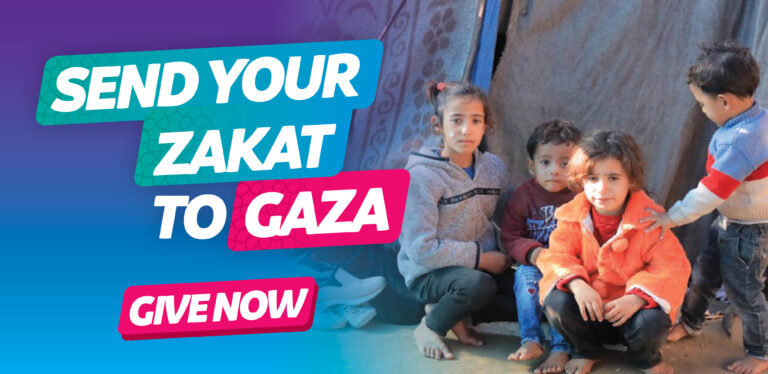Taraweeh prayer is a significant act of worship during the holy month of Ramadan, giving Muslims a special opportunity to seek closeness to Allah SWT through extra nightly prayers. While it is universally acknowledged as a recommended (Sunnah) practice, one of the key points of discussion among scholars and within the Muslim community is the number of rakats (units of prayer) that should be performed in Taraweeh. This article delves into the background, diverse practices, and rulings regarding the number of rakats in Taraweeh prayer.
The Sunnah of Taraweeh: 11 Rakats
The most commonly cited practice is derived from the hadith of the Prophet Muhammad SAW, in which he regularly prayed 11 rakats during Taraweeh, including Witr (the final prayer of the night). The basis for this practice is the well-known narration of Aisha (may Allah be pleased with her). She reported that the Prophet SAW did not pray more than 11 rakats during the night, regardless of whether it was Ramadan or another time of the year. She described his prayer in detail:
“The Messenger of Allah (peace and blessings be upon him) would pray four rakats, and do not ask about their beauty and length, then he would pray four rakats, and do not ask about their beauty and length, then he would pray three (Witr).” (Narrated by Al-Bukhari and Muslim)
This hadith is widely accepted and serves as the foundation for those who adhere strictly to 11 rakats in Taraweeh. It is important to note, however, that the Prophet’s SAW prayer was characterised by its depth and length. He would recite the Quran slowly and deliberately, reflecting on its meanings, and his prostrations were long and filled with humility. Therefore, the focus for those who choose to follow this Sunnah should be on the quality and devotion of the prayer, not merely the number of rakats.
The practice of 11 rakats is especially common in certain regions, such as Saudi Arabia and among many communities in the West. However, this is not the only valid practice, and historically, other approaches have also been established.
The Practice of 20 Rakats
One of the most prominent examples of a different practice comes from the time of Umar ibn al-Khattab (may Allah be pleased with him), the second caliph of Islam. During his caliphate, the Muslim community would pray 20 rakats in Taraweeh. This was confirmed in multiple narrations, including one in which it is said that Umar gathered the companions and had Ubayy ibn Ka’b lead them in Taraweeh for 20 rakats.
The shift to 20 rakats was not arbitrary. Umar ibn al-Khattab recognized that with the growing number of Muslims, especially in the congregation, a shorter and more manageable prayer routine might better suit the community. By increasing the number of rakats but reducing their length, more people could participate in a way that accommodated their various needs. Importantly, none of the companions objected to this practice, which provides strong evidence that it was a valid form of worship.
Imam Malik, Imam Ash-Shafi’i, and Imam Ahmad ibn Hanbal all regarded 20 rakats as a sound practice. In fact, Imam Ash-Shafi’i mentioned that this was the tradition in Makkah, where 20 rakats were prayed in the Haram (Grand Mosque). This tradition was also observed in the Prophet’s Mosque in Madinah.
The opinion of these great scholars further solidifies the legitimacy of 20 rakats in Taraweeh, and it became the standard in many Islamic regions, especially those influenced by the Shafi’i and Maliki schools of thought. The majority of mosques worldwide, including those in regions such as the Indian subcontinent, North Africa, and the Arabian Peninsula, follow the practice of 20 rakats.
Flexibility in the Number of Rakats
One of the most important aspects of Taraweeh prayer is its flexibility. The Prophet Muhammad SAW provided general guidelines for night prayer, stating that it should be prayed in pairs of two rakats (two by two), and it could be concluded with a single rakah of Witr. This flexibility means that there is no fixed number of rakats for Taraweeh, and it can vary based on the situation, the community, or the individual’s capability.
Shaykh Ibn Taymiyah (may Allah have mercy on him) also highlighted the absence of a set number for night prayers. He stated that the number of rakats is not the central focus; rather, it is the sincerity, devotion, and concentration that count. Whether a person prays 11 rakats or 20 rakats, the key is to engage in Taraweeh with a humble heart and a desire to grow closer to Allah SWT.
Shaykh Ibn ‘Uthaymin (may Allah have mercy on him) expanded on this point by cautioning against being overly rigid. He observed that some Muslims, in their zeal to uphold the Sunnah of 11 rakats, would criticise or even abandon those who prayed more than that. He advised that such an approach is misguided, as both 11 and 20 rakats have strong foundations in Islamic tradition. Moreover, each practice offers rewards and merits, as long as the intention is to seek Allah’s pleasure.
What Matters Most: Quality Over Quantity
Ultimately, the question of how many rakats should be prayed in Taraweeh boils down to personal capacity and the spirit of worship. For those who find solace and focus in 11 rakats, they are following the Prophetic Sunnah. For others who enjoy the extended prayer of 20 rakats, they are following a tradition that was widely established by the companions of the Prophet SAW, particularly during the era of Umar ibn al-Khattab.
Taraweeh is a voluntary act of worship, and its primary purpose is to help Muslims reflect on the Quran, increase their devotion, and seek closeness to Allah during the blessed nights of Ramadan. Whether one chooses to pray 8, 11, 20, or even more rakats, the essence of Taraweeh is found in the quality of the prayer, the sincerity of the supplications, and the mindful recitation of the Quran.
During the nights of Ramadan, Muslims are encouraged to immerse themselves in acts of worship, prayer, and remembrance of Allah SWT. Taraweeh provides an opportunity for communal worship in the mosque, fostering unity and brotherhood, while also allowing for personal reflection and spiritual growth.
Conclusion: Embrace the Spirit of Taraweeh
Taraweeh is not just about the number of rakats. Whether you follow the tradition of 11 rakats as practised by the Prophet SAW, or the 20 rakats instituted by Umar (may Allah be pleased with him), what matters most is the intention and devotion behind the prayer. Islam offers flexibility and accommodates the diverse needs of its followers, allowing each individual or community to choose the practice that best suits their circumstances.
In the end, Taraweeh is a reminder of the immense spiritual opportunities present in Ramadan. It is a chance to stand in prayer, engage with the Quran, and draw nearer to Allah SWT. Muslims should approach Taraweeh with gratitude, focusing on its blessings rather than becoming caught up in debates over the number of rakats. The beauty of Taraweeh lies in its ability to transform hearts and elevate one’s connection with Allah SWT during this blessed month.








 AUD
AUD
 GBP
GBP
 EUR
EUR
 CAD
CAD
 SGD
SGD
 MYR
MYR


